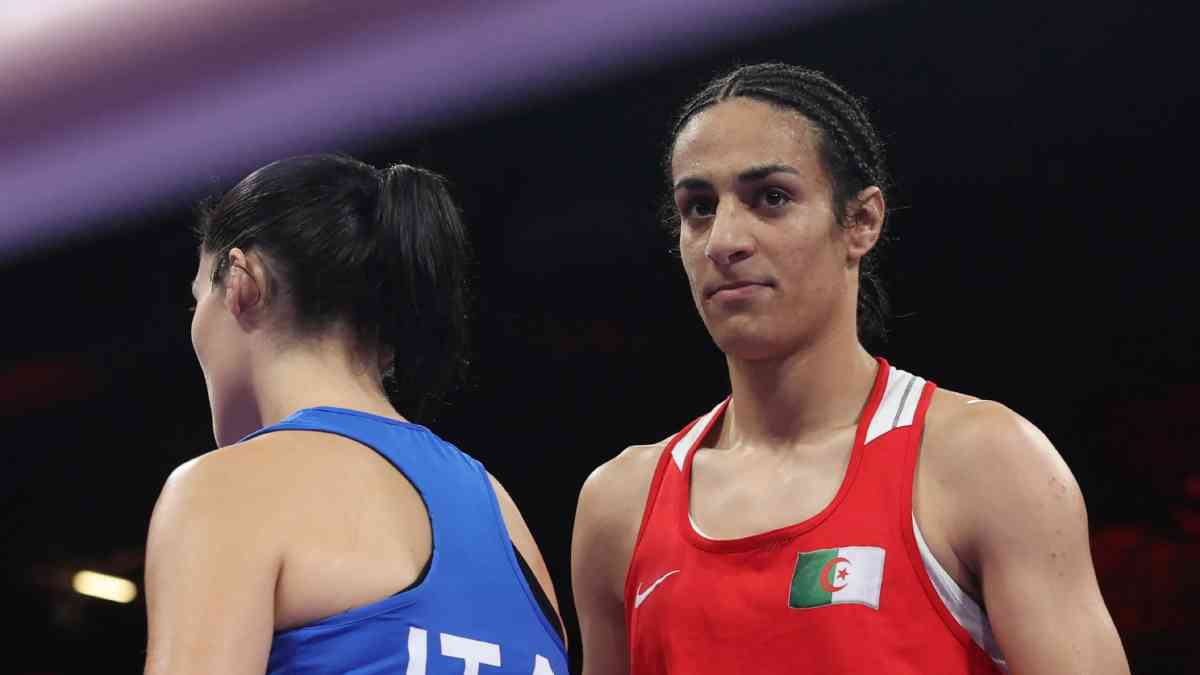Imane Khelif controversy: The 1928 Olympics marked a significant moment when women were allowed to run on the track for the first time. Before this, women were not permitted to compete in track events in Olympic history. They were only allowed to participate in lighter sports like swimming and tennis. There was a bizarre belief that women were not suited for rigorous sports. It was commonly thought that if women took part in athletics extensively, they would become like men.
This mindset kept women out of many games for a long time. Today, as women excel in running, javelin, hammer throw, weightlifting, wrestling, or boxing, it showcases their capabilities. It demonstrates that women are not physically inferior to men. Recently, the Paris Olympics has also been in the spotlight due to gender controversies. Although the Paris Olympics were promoted as gender-neutral, this claim is now being questioned.
Woke culture and this Imane Khelif, a man posing as a woman destroyed Angela Carini’s dream 💔#ImaneKhelif #AngelaCarini #Boxing #Olympics pic.twitter.com/62K4iLnXWs
— श्रद्धा | Shraddha 🇮🇳 (@immortalsoulin) August 1, 2024
---Advertisement---
A powerful punch to Karini’s face in just 30 seconds
On August 1, a boxing match took place between Algeria’s boxer Imane Khelif and Italy’s boxer Angela Karini. Just 30 seconds into the match, Khelif landed a powerful punch on Karini’s face. Initially, Karini thought she would continue the fight, but the punch was so strong that she left the ring in just 46 seconds. After leaving the match, Karini said that she had never experienced such a powerful punch in her life. She felt like she was fighting a male boxer because Iman is a transgender athlete.
Also Read: Simone Biles Takes Home Gold Again: But Why Her Diamond GOAT Necklace Is Making Waves
Is Iman Khleif transgender or does she have a disorder?
In fact, Imane is not a transgender athlete. She was born female but has a sex development disorder, which means she has XY chromosomes and high testosterone levels similar to male athletes. On social media, people are saying that Iman has higher testosterone levels, a hormone found in men in higher amounts. This is causing controversy over her participation in women’s competitions.
When athletes had to undress in front of a panel in Olympics
According to a research article published in Scientific American, in 1966, it was decided that female athletes would undergo a nude parade. This practice was so crude that it was referred to as the “peek and poke test” at the time. Before running on the track, female athletes had to go into a closed room and undress in front of a panel of people who determined if their bodies were truly female.
Sex tests were implemented at the Olympics for the first time in 1968
The International Association of Athletics Federations (IAAF) made sex tests mandatory for the first time. This requirement was initially introduced in 1966 at the European Athletics Championships. At that time, there were reports suggesting that some of the top female athletes from the Soviet Union and Eastern Europe were actually men. The first sex tests were conducted at the 1968 Olympics. Later, to avoid this test, many athletes even underwent surgeries. This led to identity crises after the games, and reports emerged of athletes experiencing depression and loneliness, with some even committing suicide.
Also Read: Paris Olympics 2024: Manu Bhaker Finishes 4th in 25m Pistol Event













